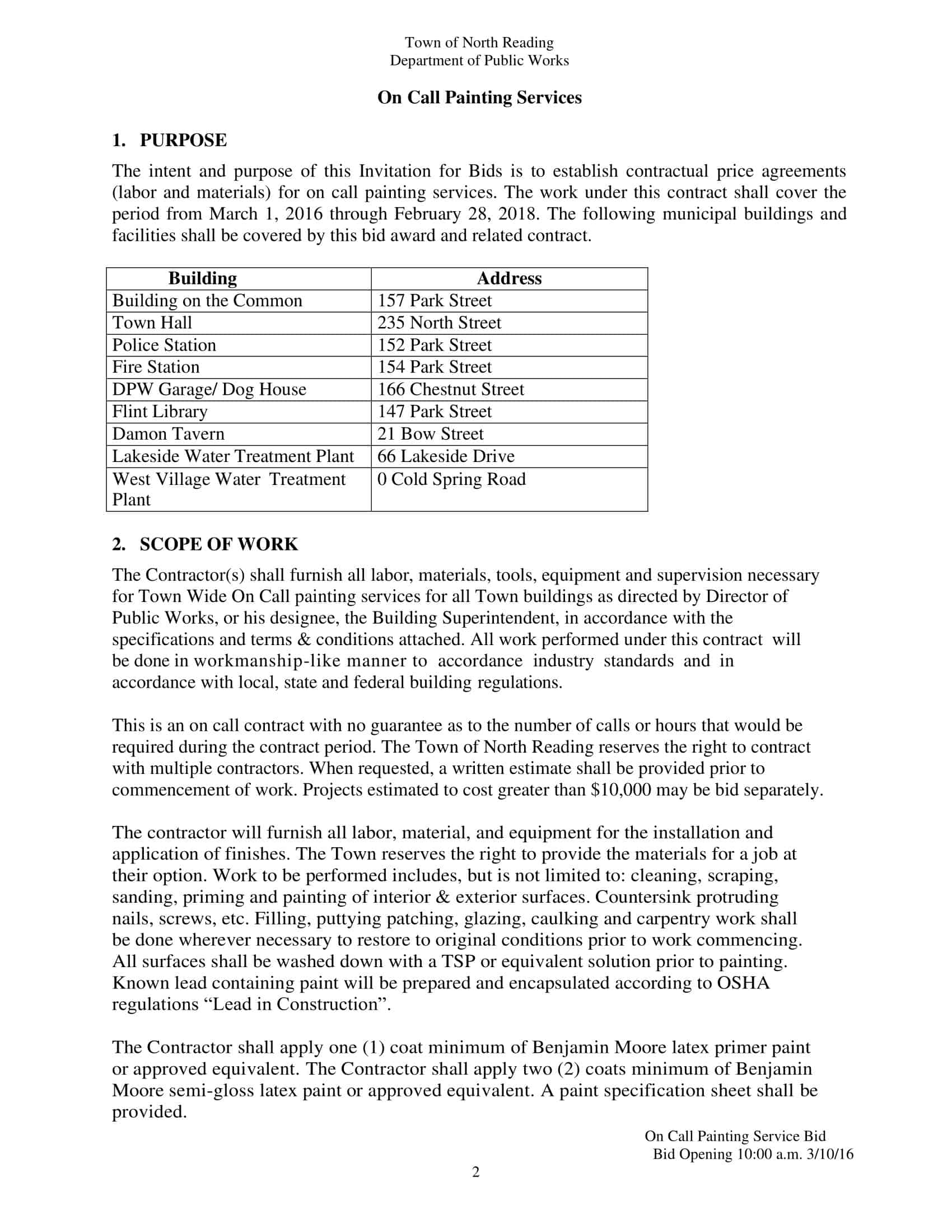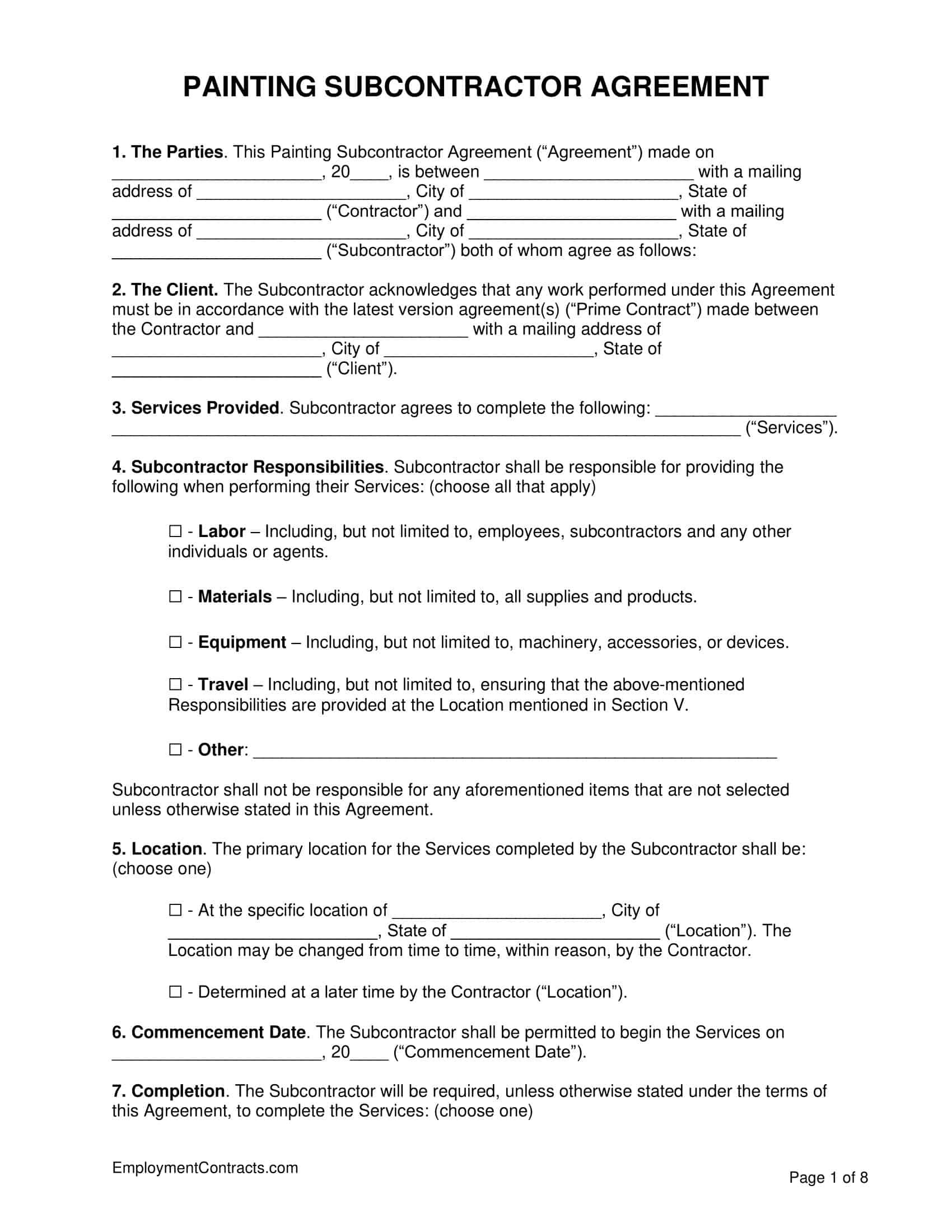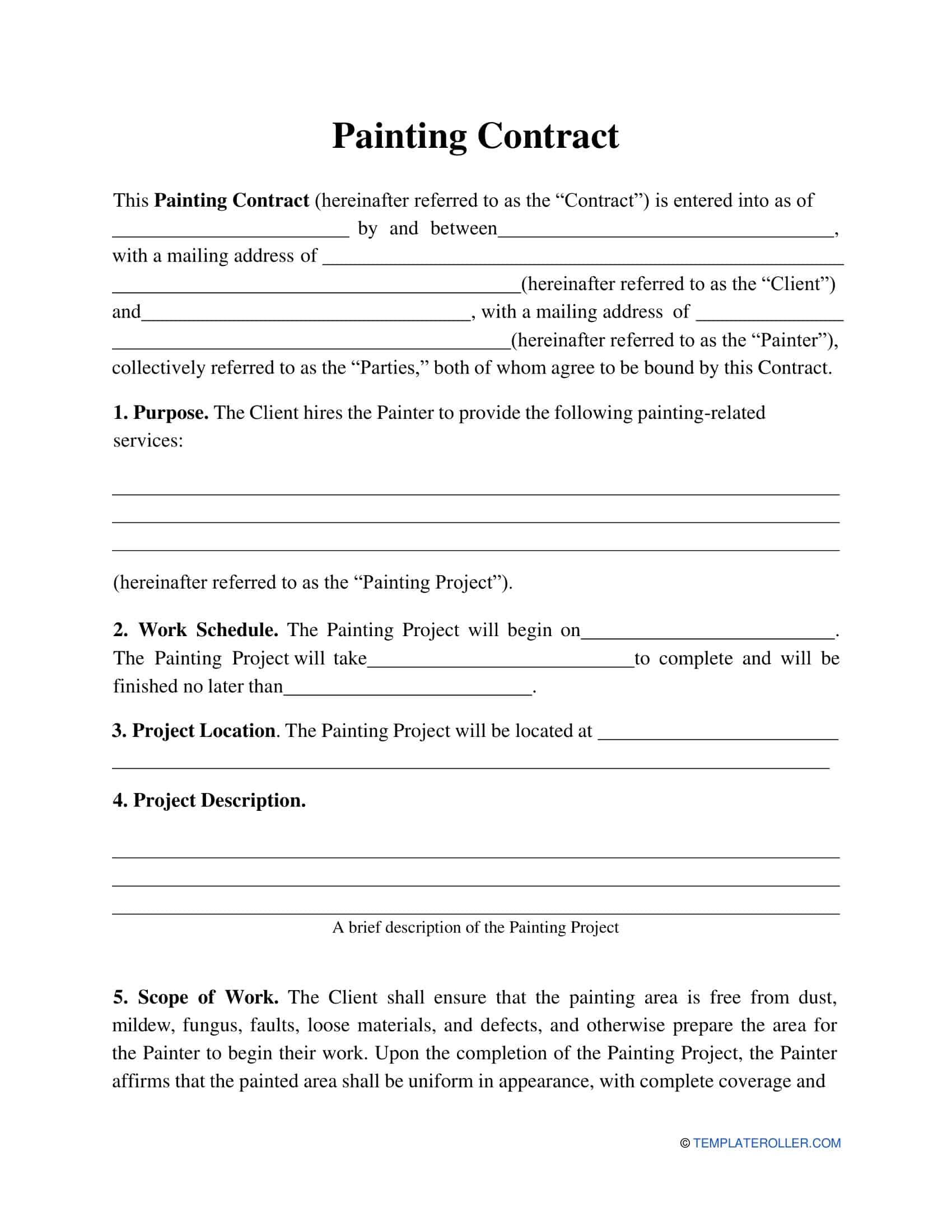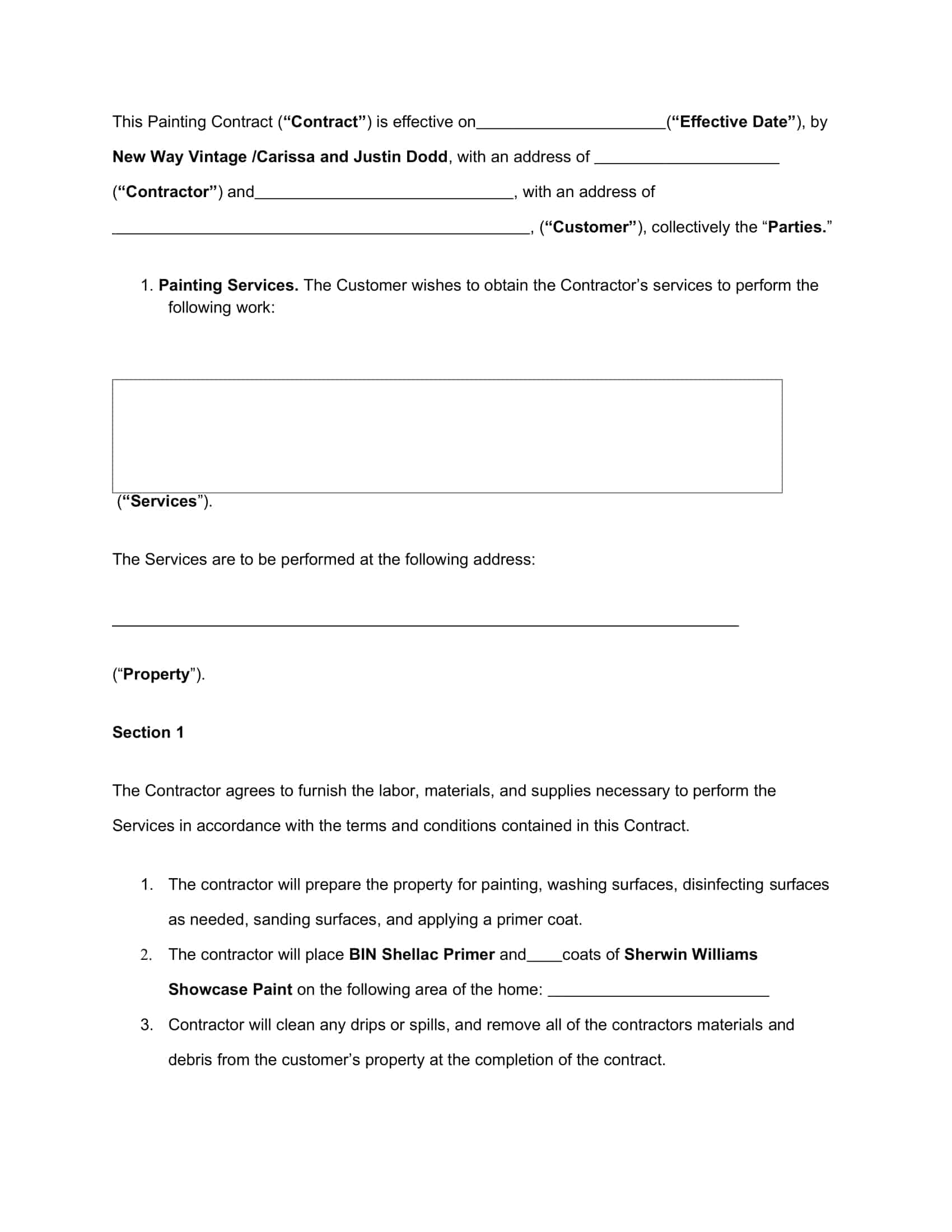A painting contract is a legally binding agreement between a homeowner or business owner and a painting contractor that outlines the terms and conditions of a painting project. A well-written painting contract helps to ensure that both parties understand their responsibilities, sets expectations for the project outcome, and minimizes the risk of disputes or misunderstandings.
A painting contract should include details such as the scope of work, the timeline for completion, payment terms, and any warranties or guarantees provided by the contractor. Whether you’re hiring a painting contractor for a residential or commercial project, a clear and detailed painting contract is an essential tool for protecting your interests and ensuring a successful outcome.
Table of Contents
When to use a Painting Contract

A painting contract should be used whenever a homeowner or business owner hires a painting contractor to perform work on their property. This includes both interior and exterior painting projects, as well as smaller touch-up or maintenance projects and larger, more complex projects that require multiple stages of work.
Painting Contract Templates
“Painting Contract Templates” are pre-designed documents that provide a comprehensive framework for formalizing agreements between painters or painting contractors and their clients. These templates serve as a vital tool to outline the terms, conditions, and scope of work involved in a painting project.
Painting contract templates cover essential aspects of a painting job, including project details, pricing, timelines, materials, warranties, and payment terms. By utilizing these templates, both parties can establish clear expectations and protect their interests throughout the project.
These templates are often created by legal professionals or industry experts with knowledge of painting contracts and regulations. They ensure compliance with relevant laws and standards, minimizing potential disputes and providing a solid foundation for a successful painting project.
Using a painting contract can be especially important in the following circumstances:
When hiring a contractor for the first time: A painting contract helps to establish clear expectations and reduces the risk of misunderstandings or disputes.
When the project is large or complex: A painting contract helps to ensure that both parties understand the scope of the project and the timeline for completion.
When working with a high-priced contractor: A painting contract helps to protect your investment by clearly outlining payment terms and any warranties or guarantees provided by the contractor.
When there is a risk of disputes: A painting contract helps to minimize the risk of disputes by clearly outlining the responsibilities of both parties.
In conclusion, using a painting contract is a critical step in protecting your interests and ensuring a successful outcome when hiring a painting contractor. Whether the project is large or small, a clear and detailed painting contract is an essential tool for establishing expectations, reducing the risk of misunderstandings, and protecting your investment.
Benefits of a Good Painting Contract
A well-written painting contract offers several benefits to both the homeowner or business owner and the painting contractor. Some of the key benefits of a good painting contract include:
Clarity and understanding: A painting contract helps to ensure that both parties understand the terms and conditions of the project, including the scope of work, timeline for completion, payment terms, and any warranties or guarantees.
Reduced risk of disputes: By clearly outlining the responsibilities of both parties, a painting contract minimizes the risk of disputes or misunderstandings that could arise during the course of the project.
Protection of investment: A painting contract helps to protect the homeowner or business owner’s investment by clearly outlining payment terms and any warranties or guarantees provided by the contractor.
Peace of mind: A well-written painting contract provides peace of mind to both parties by establishing clear expectations and reducing the risk of disputes or misunderstandings.
Legal protection: A painting contract serves as a legally binding agreement that can be enforced in the event of a dispute.
Improved communication: A painting contract provides a clear framework for communication between the homeowner or business owner and the painting contractor, helping to ensure that both parties are on the same page throughout the project.
What Should Be Included in a Painting Contract?
A painting contract should include several key elements to ensure that both the homeowner or business owner and the painting contractor are clear on the terms and conditions of the project. Some of the key elements that should be included in a painting contract include:
Scope of work: A clear description of the work that the painting contractor will perform, including details such as the areas to be painted, the type of paint to be used, and any preparation work that will be required.
Timeline for completion: A clear timeline for the completion of the project, including the start and finish dates, and any deadlines for intermediate stages of the work.
Payment terms: A clear explanation of the payment terms, including the total cost of the project, any deposit requirements, and the payment schedule.
Warranties and guarantees: Information on any warranties or guarantees provided by the painting contractor, including the length of the warranty and what is covered.
Responsibilities of each party: A clear outline of the responsibilities of both the homeowner or business owner and the painting contractor, including who is responsible for supplying materials, who is responsible for cleaning up after the work is complete, and who is responsible for any damage to the property during the course of the project.
Insurance and liability: Information on the insurance and liability coverage of the painting contractor, including details of any workers’ compensation insurance and general liability insurance.
Dispute resolution: Information on the process for resolving any disputes that may arise during the course of the project, including details of any mediation or arbitration processes.
What Should a Painting Contract Look Like
A painting contract should be a clear, concise, and detailed document that outlines the terms and conditions of the project, including the scope of work, timeline for completion, payment terms, and any warranties or guarantees. A painting contract should also include an estimate of the materials and labor costs for the project.
A sample painting contract may look like the following:
Introduction:
Brief description of the project, including the name of the homeowner or business owner and the painting contractor.
Purpose of the contract, which is to outline the terms and conditions of the project.
Scope of Work:
Detailed description of the work that the painting contractor will perform, including the areas to be painted, the type of paint to be used, and any preparation work that will be required.
Timeline for Completion:
Clear timeline for the completion of the project, including the start and finish dates, and any deadlines for intermediate stages of the work.
Materials Estimate:
List of the materials required for the project, including the estimated cost of each item.
Labor Estimate:
Estimate of the labor costs for the project, including the hourly rate for the painting contractor and the estimated number of hours required for the project.
Payment Terms:
Clear explanation of the payment terms, including the total cost of the project, any deposit requirements, and the payment schedule.
Warranties and Guarantees:
Information on any warranties or guarantees provided by the painting contractor, including the length of the warranty and what is covered.
Responsibilities of Each Party:
Clear outline of the responsibilities of both the homeowner or business owner and the painting contractor, including who is responsible for supplying materials, who is responsible for cleaning up after the work is complete, and who is responsible for any damage to the property during the course of the project.
Insurance and Liability:
Information on the insurance and liability coverage of the painting contractor, including details of any workers’ compensation insurance and general liability insurance.
Dispute Resolution:
Information on the process for resolving any disputes that may arise during the course of the project, including details of any mediation or arbitration processes.
Signature Lines:
Space for the homeowner or business owner and the painting contractor to sign the contract, indicating their agreement to the terms and conditions outlined in the document.
FAQs
Why is a painting contract important?
A painting contract is important because it protects both the homeowner or business owner and the painting contractor. It clearly outlines the expectations and responsibilities of each party, which helps to prevent misunderstandings or disputes during the project. It also provides a clear understanding of the total cost of the project, including the estimate for materials and labor.
Can a painting contract be changed once it has been signed?
Yes, a painting contract can be changed after it has been signed, but both the homeowner or business owner and the painting contractor must agree to the changes and sign a new agreement.
Who is responsible for supplying the materials for a painting project?
The responsibility for supplying the materials for a painting project is typically outlined in the painting contract. It may be the responsibility of the homeowner or business owner or the painting contractor, depending on the terms and conditions outlined in the agreement.
What happens if there is a dispute during a painting project?
If there is a dispute during a painting project, the dispute resolution process outlined in the painting contract should be followed. This may involve mediation, arbitration, or other forms of resolution. If the dispute cannot be resolved, it may need to be resolved through legal action.
Who is responsible for clean-up after a painting project?
The responsibility for clean-up after a painting project is typically outlined in the painting contract. It may be the responsibility of the homeowner or business owner or the painting contractor, depending on the terms and conditions outlined in the agreement.
How much should a painting contract cost?
The cost of a painting contract will depend on the scope of work, the estimate for materials and labor, and the hourly rate of the painting contractor. It is important to obtain multiple quotes from different contractors to ensure that you are getting a fair price for the work.
How do I find a reputable painting contractor?
You can find a reputable painting contractor by asking for recommendations from friends, family, and neighbors, checking online reviews, and obtaining multiple quotes from different contractors. It is important to research the contractor thoroughly and check their references before signing a painting contract.
What happens if the painting project takes longer than expected?
If the painting project takes longer than expected, the timeline for completion outlined in the painting contract should be revised. Both the homeowner or business owner and the painting contractor must agree to the revised timeline and sign a new agreement.
What happens if the painting project goes over budget?
If the painting project goes over budget, the payment terms outlined in the painting contract should be revised. Both the homeowner or business owner and the painting contractor must agree to the revised payment terms and sign a new agreement.
What happens if the painting contractor fails to complete the project?
If the painting contractor fails to complete the project, the homeowner or business owner may need to find another contractor to complete the work. The cost of completing the work may be covered by the painting contractor’s insurance or the homeowner or business owner may need to pay for the work themselves, depending on the terms and conditions outlined in the painting contract.










































![%100 Free Hoodie Templates [Printable] +PDF 1 Hoodie Template](https://www.typecalendar.com/wp-content/uploads/2023/05/Hoodie-Template-1-150x150.jpg)
![Free Printable Catering Contract Templates [Word, PDF] Simple 2 Catering Contract](https://www.typecalendar.com/wp-content/uploads/2023/05/Catering-Contract-1-150x150.jpg)
![Free Printable Land Contract Templates [Word, PDF] Simple 3 Land Contract](https://www.typecalendar.com/wp-content/uploads/2023/05/Land-Contract-1-150x150.jpg)
